The Shunning of Helene Schneider
Santa Barbara Mayor Rebuked over Freeway Widening
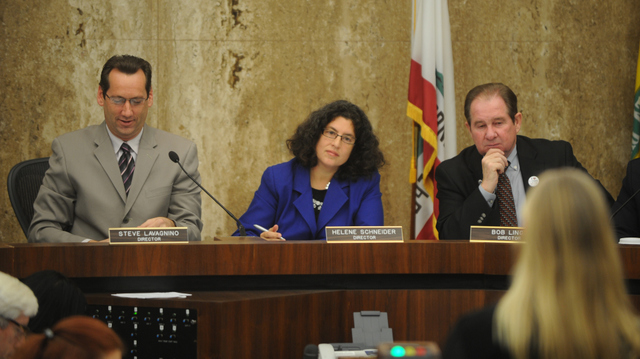
In a powerful combination of intense political melodrama and insider baseball, Santa Barbara Mayor Helene Schneider was publicly rebuked by fellow members of the Santa Barbara County Association of Governments (SBCAG) for her outspoken and insistent opposition to Caltrans’s plans to widen Highway 101 from Santa Barbara to Carpinteria.
By a vote of 11-to-2, the SBCAG board denied Schneider her turn as chair of the super-government agency responsible for dispensing millions of state and federal transportation dollars throughout Santa Barbara County each year. This year was Schneider’s turn to take the helm, and this Thursday was the day she would have been sworn in. Instead, SBCAG — made up of elected representatives from each city council within the county and all five county supervisors — voted to bypass Schneider and give the nod to Solvang Mayor Jim Richardson, with supervisor Janet Wolf as vice chair.
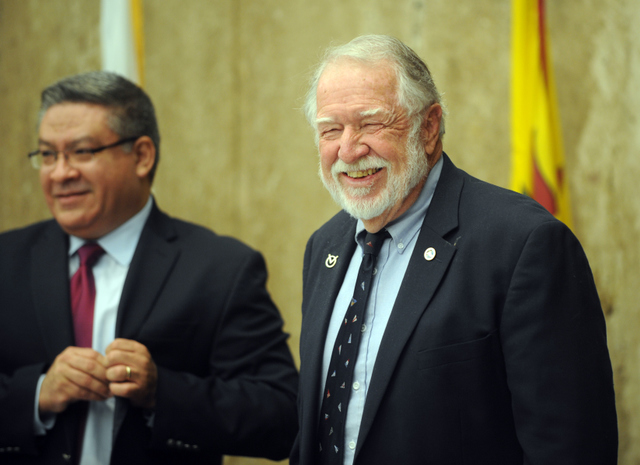
Although the position of SBCAG chair is largely ceremonial, the vehemence behind the move was anything but. Just a year ago, the sky appeared to be the limit for Schneider, a smart and talented moderate progressive. That’s when she cake-walked into a second mayoral term, so strong, popular, and well-funded that no credible candidate could be enticed to challenge her. But in the wake of Thursday’s smackdown, Schneider’s political future remains uncertain.
Lining up against Schneider on Thursday was a coalition of movers and shakers from all sides of the political aisle, many of whom are rarely seen in the same room, let alone the same zip code. Working behind the scenes was political consultant Brian Robinson, widely regarded as the alter ego to Councilmember — and SBCAG staff strategist for the freeway widening — Gregg Hart. That there is little love between Hart and Schneider is well known.
During the last City Council campaign, Schneider did everything she could to ensure that Hart did not win, even luring former councilmember David Landecker out of political retirement to run as the anti-Hart candidate. Schneider objected that Hart had a conflict of interest; how could he represent the city on the freeway widening when he was paid by SBCAG to ensure the Caltrans proposal was approved and built?
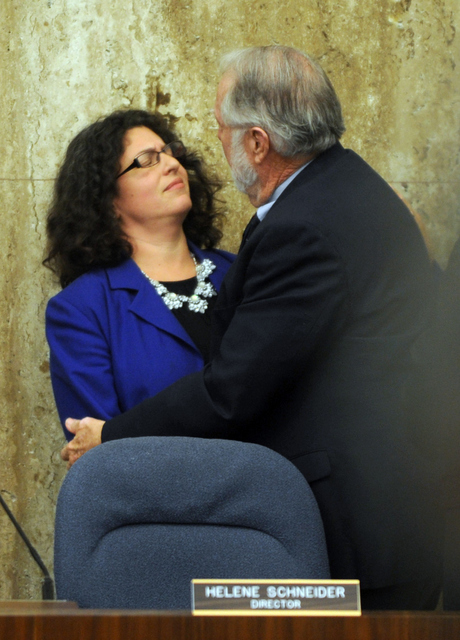
Ironically, it would be conflict-of-interest charges that would sink Schneider’s boat. The chief complaint leveled against her was that she had publicly endorsed the lawsuit filed two months ago challenging the legitimacy of the environmental impact report on the freeway-widening plan. Not only that, Schneider encouraged other lawsuits to be filed. This call to arms appeared in an op-ed piece — signed by Councilmember Bendy White, as well — that ran in several South Coast media outlets, including The Santa Barbara Independent.
The op-ed appeared only after Schneider had worked unsuccessfully to get the City of Santa Barbara to file a legal challenge of its own. Schneider’s detractors questioned how her fellow boardmembers could trust her not to divulge details of SBCAG’s legal defense strategy to those bringing the lawsuit. Likewise, they contested how she could serve as chair of an organization whose primary mission lay in bringing the freeway widening to a fruitful conclusion.
Schneider said precious little in her own defense. And she was the only one on Thursday who did. In previous conversations, she took exception to any comparison between her apparent conflict of interest and Hart’s. And in a previous SBCAG meeting, county counsel Bill Dillon stated that whatever apparent conflict Schneider had did not meet the legal requirements that would preclude her from participating in SBCAG deliberations.
Though Thursday’s takedown featured denunciations by conservatives like Andy Caldwell of COLAB (Coalition of Labor, Agriculture & Business) and Joe Armendariz with the Santa Barbara County Taxpayers Association, some of the most damning criticisms came from left-leaning progressives like Mickey Flacks, who accused Schneider of “acting on behalf of Montecito folks … who are paying for the lawsuits and acting in their own selfish interests. I fervently hope you would listen to the community, instead of the elite few whose favor the mayor seeks to curry.”
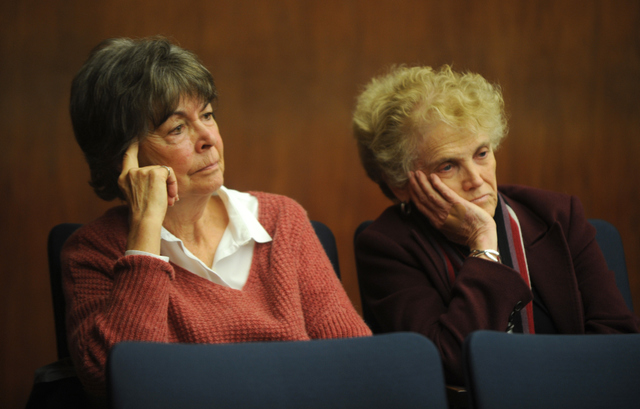
Former county supervisors Susan Rose and Gail Marshall, Democrats cut from the same political cloth as Schneider and previous SBCAG members themselves, also voiced their opposition to Schneider’s potential assumption of the SBCAG supervising chair. “We believe it is imperative you select individuals who will support [highway widening], not someone who supports a lawsuit opposing the project,” said Rose. “It’s time to finish the job. The citizens you represent deserve no less.”
Nationally recognized journalist and behind-the-scenes pot-stirrer Ann Louise Bardach, who authored a December 11 Independent op-ed against Schneider, delivered some of the most colorful zingers. She characterized Schneider’s lawsuit support as “a jaw-dropping charade worthy of Bell, California,” and added, “Having Schneider chair SBCAG is like having Vladimir Putin chair a human rights coalition in the Ukraine. … Even Ray Charles could see this.”
Prominent philanthropist and longtime Schneider supporter Sara Miller McCune approved the election of Richardson and Wolf, urging the council to “do the right thing.” “This is not about one person; this is about hundreds of thousands of people, including the tourists whose dollars we count on,” she said. “You must follow the wishes of the voters that you all are pledged to serve, and you must do it today.”
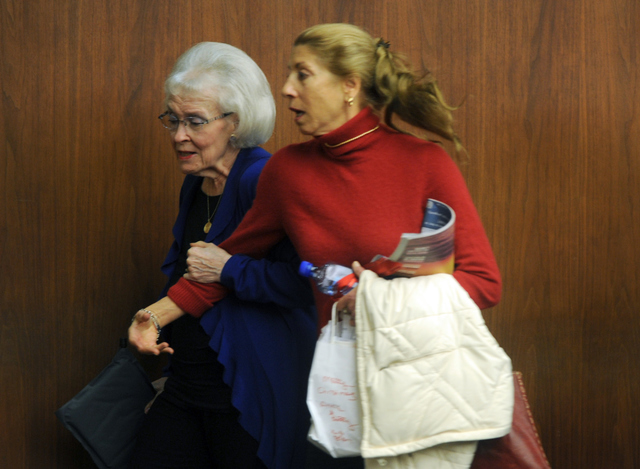
In 2008, 79 percent of voters countywide approved a bond measure known as Measure A, which among other things, set aside $130 million for the freeway widening project, a $450 million undertaking. Since then, Caltrans and Santa Barbara officials have been wrangling over the details of what would — and would not be — included. A group of politically connected Montecito residents formed Common Sense 101, arguing that the freeway’s left-hand off-ramps should be retained and the proposed HOV lane be shortened or eliminated entirely. They hired Schneider’s longtime political advisor Jeremy Lindaman as their consultant.
From the start, the City of Santa Barbara had a serious beef with the freeway-widening proposal, and Schneider was vocal about its shortcomings. There was no Olive Mill Road roundabout included, she objected, and likewise no widening of the railroad bridge over Cabrillo Boulevard. Without these, she and others at City Hall complained, there would be major traffic jams. When Hart and SBCAG argued these could be addressed later — in parallel projects — Schneider would retort, “Show me the money.”
Likewise, City Hall traffic planners strenuously objected that the environmental impact report sugar-coated the significant trouble the freeway widening would cause for motorists on city streets. As morning traffic backed up between the Mission and Las Positas off-ramps, they worried, motorists would flee to the city streets, thus making a serious mess of Santa Barbara’s grid. This problem was given a scant half-sentence mention in the otherwise voluminous report. Schneider lobbied her own planning commission to object to Caltrans’s environmental review and won unanimous support for her efforts. Likewise, then–city administrator Jim Armstrong weighed in on Schneider’s side.
Caltrans wouldn’t budge. SBCAG pledged to work cooperatively to ensure Schneider’s concerns were addressed, but it had no interest in delaying a very impatient Caltrans any further. Last May, SBCAG voted 11-to-2 to move full steam ahead with the freeway widening, with Schneider and North County Supervisor Peter Adam casting the only votes in opposition.
Schneider will remain a member of the board, but Thursday’s dismissal signifies its own self-administered silencing of a persistent minority voice within its ranks. With the outcome all but preordained, Schneider didn’t bother to mount even a semblance of a counter-attack. She was exceptionally brief, only rebutting claims she would not work hard to raise the additional millions necessary to fund the freeway widening. “I want to say of course I would be advocating for state and federal funding on the project. That’s been one of my major concerns,” she explained before conceding to the wishes of the majority.



